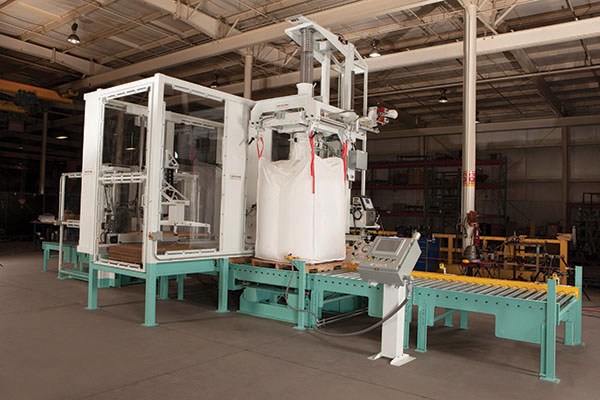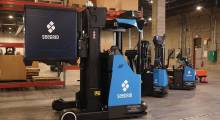Like most packaging operations, those that handle loose, free-flowing, dry bulk materials—including powders, granules, pebbles, gravel, sand or ingredients for food and pharmaceutical manufacturing—are increasingly turning to turnkey, integrated automation.
“Companies running bulk bag filling applications want integrated systems that take the material from processing to either internal storage or outbound shipping with just one operator,” explains Chuck Johnson, manager of applications engineering for National Bulk Equipment.
The latest solutions feature automated operation of nearly all functions, except hanging the bag and connecting it to the filling station.
“Today’s automated systems include pallet or slip sheet dispensing, metered material flow, bag weighing, and filled-bag accumulation conveyors that allow one operator to process up to 20, 4,500-pound capacity bulk bags or 90,000 pounds of dry bulk material per hour,” Johnson says.
When a bulk material packaging operation inquires about automation, Johnson and his team take several key factors into consideration.
“First, we look at the properties of the material that’s being packaged,” he explains. “Some are very fine and fluid-like, so they tend to become extremely aerated. Those materials require specialized equipment to de-aerate the material and increase throughput.”
Other factors include upstream and downstream processes, as well as the ultimate destination of the packaged material. “If the product is for internal consumption, a legal-for-trade weighing device isn’t necessary; but if it’s a packaged product to be sold, it is,” Johnson says. “Or, to maximize the shipping volume of a truck, the equipment can vary the fill height of the bags and achieve more trailer density than packaging product in Gaylord boxes.”
Additionally, different bulk bag styles—such as those with a separate, disposable liner that allows an outer, polywoven bag to be reused, or bulk bags with baffled corners to facilitate upright stability—require different fill spouts or inflation systems, while certain seal types need specific finishing equipment.
“Some operations want to vacuum any air out of the bulk bag before packaging, or heat seal the bulk bag for product security,” he adds. “To ensure that a filled and sealed bulk bag is stable and square, we can add densification functions to help pack the material by driving the air out of it.”
Article topics








